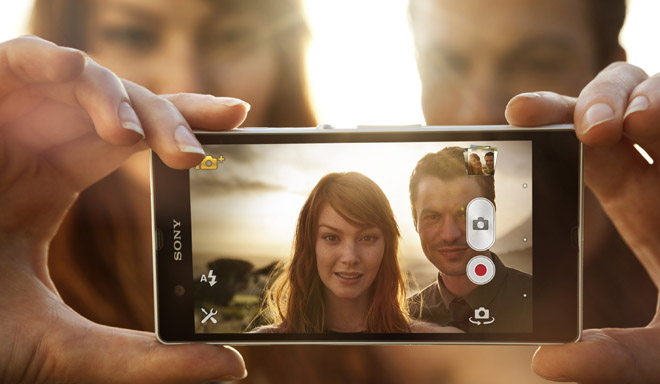HDR video and Mobile Bravia Engine 2 in Sony smartphones

Work on the quality of photos and videos - both shooting and demonstration on the screen - has always been one of the priorities in the development of Sony smartphones. For the first, a whole host of technologies was responsible, first of all - the “backlight” technology of the Exmor R matrix that appeared two years ago, which increases the sensitivity of the matrix in poorly lit conditions. Mobile BRAVIA Engine technology struggled for picture quality. In the models of the new year, they continue their development: in the recently introduced Sony flagship, the Xperia Z, a new sensor called Exmor RS received support for HDR video, Superior Auto mode, and noise reduction. A technology Mobile BRAVIA Engine acquired a number of improvements and an index of 2 at the end.
HDR for Sony Xperia Z
The human eye can perceive bright and dark details of the environment at the same time in a very wide range. This ability is very difficult to reproduce in ordinary cameras. Usually you have to choose between good quality photography of dark areas and avoidance of illumination on bright ones. Digital technologies that are widely used today provide a very narrow dynamic range, often called SDR (Standard Dynamic Range) or LDR (Low Dynamic Range). For comparison, the common JPEG and MPEG standards allow us to represent a dynamic range of about 1,000: 1, while real scenes often have a dynamic brightness range of 1,000,000: 1 and higher. The use of HDR technology allows you to work with the full range of scene brightness, eliminating historical limitations.
This video is not about HDR, I just like the music:
')
For the first time, we presented the camera with HDR support on Sony Xperia V, and for Xperia Z and Xperia ZL we added the ability to record video in HDR.
How it works
To achieve the true HDR effect, the Sony Xperia Z camera changes the exposure for every two rows of pixels on the matrix. This creates a “spatially varying exposure (SVE) for dark and light areas of the image. Simply put, for each frame, the camera takes two pictures with different exposure levels simultaneously, which a special algorithm uses to create a combined image pixel by pixel. As a result, the details on the dark and light areas of the photo are distinguishable equally well. So now with Xperia Z you can shoot good shots even in the most difficult conditions.
Mobile BRAVIA Engine 2
The image enhancement technology Mobile Bravia Engine has been used in Sony mobile phones for quite some time. The time has come for the next version of Mobile BRAVIA Engine 2.
First, contrast enhancement highlights the details in a video or image. This is achieved due to the greater darkening of the dark areas - which gives the picture as a whole a greater contrast. At the same time, the level of contrast change adapts to a specific image in order to avoid situations when the already dark becomes even darker.
Further, color management gives deeper and more vibrant colors by increasing its saturation. Then the noise reduction filter removes image artifacts for a cleaner picture. This is especially useful when watching low quality streaming video online. Finally, the sharpness filter “Sharpit” image for better image clarity.
And now let's take a look at what's new in Mobile BRAVIA Engine 2.
Advanced contrast enhancer
In Mobile BRAVIA Engine 2, the updated algorithm optimizes the contrast by analyzing the distribution of brightness in each frame, allowing you to achieve finer gradations of dark shades. This gives dynamics to the image, making it more alive.

Content Type Classification for Optimized Sharpness Filter
This algorithm chooses the most appropriate set of filter parameters depending on video properties such as resolution and frame type. This allows you to improve the image level without adding noise in an optimal way for any type of content.

More details, as always - on the Sony Mobile developer blog .
Source: https://habr.com/ru/post/168629/
All Articles